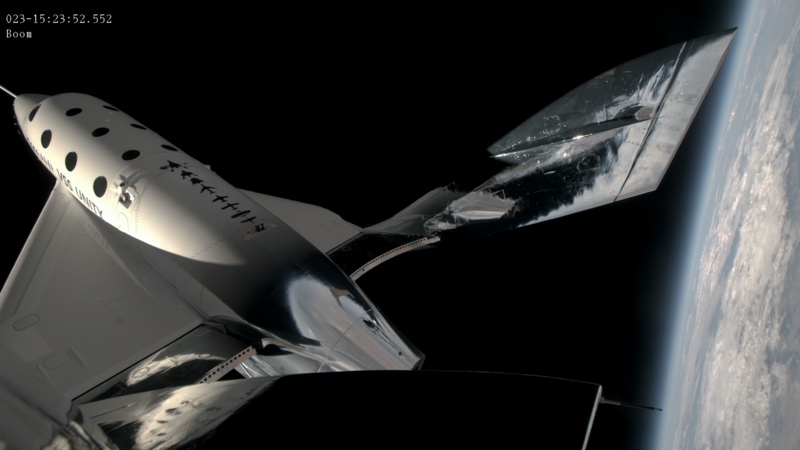On September 8th, Virgin Galactic made history by launching a satellite into space in a covert operation resembling a national security mission. The “Galactic 03” trip was the company’s third productive commercial suborbital spaceflight, providing a window into the expanding space tourism sector.

Credits: Space News
The Veil of Secrecy
The “Galactic 03” voyage of Virgin Galactic was anything but routine. Virgin Galactic made the decision to withhold the identity of the private astronauts on board until after the successful landing, in contrast to the majority of crewed missions, whether they be government or commercial. The space community was puzzled by this break with precedent. The public can monitor the mission teams’ preparations and take part in the excitement when they are revealed weeks or months prior to launch.
This cloak of secrecy’s justification is still a mystery. Virgin Galactic hasn’t given a clear justification for this deviation from accepted procedure. However, this covert strategy increased the excitement around the trip and drew attention to the company’s initiatives in the rapidly developing space tourism industry.
Mission Overview
The “Galactic 03” mission was successfully carried out. At 10:34 a.m. Eastern, Virgin Galactic’s VSS Unity spacecraft and VMS Eve mothership aircraft took off from Spaceport America in New Mexico. VSS Unity elegantly drifted back to Earth after reaching a max height of 88.6 kilometers, landing on the spaceport’s runway at 11:36 a.m. Eastern.
Nicola Pecile served as the mission’s commander. Michael Masucci served as the aircraft’s pilot, while Beth Moses, the head astronaut instructor for Virgin Galactic, was present in the cockpit. Notably, there were three private astronauts on board, which is a change from earlier Virgin Galactic missions where there were only one or two private astronauts.
Meet the Private Astronauts
After landing, Virgin Galactic revealed the names of the private astronauts. Adrian Reynard, Ken Baxter, and Timothy Nash made up the group. The first SpaceShipTwo ticket, according to Baxter, a real estate tycoon from Las Vegas, was bought from Virgin Galactic founder Richard Branson in 2004. South African entrepreneur and adventurer Nash booked his ticket in 2006. The trio was completed by British engineer Reynard, who is best known for building race cars.
It’s interesting to note that a few of these private astronauts have been openly publicizing their planned space missions. As an illustration, Ken Baxter ran a website where he posted updates on his mission preparations. Baxter went so far as to refer to himself as “America’s First Space Tourist,” a moniker formerly associated with Dennis Tito, who made headlines 22 years ago by famously paying for a seat on a Soyuz voyage to the International Space Station.
A Departure from Tradition
The “Galactic 03” mission by Virgin Galactic marked a substantial divergence from accepted practices in a number of respects. There was no live webcast of the occasion, in contrast to earlier missions. The business instead opted to give real-time updates via social media, a tactic that was also used during a test flight in May. This change in communication tactics gave the mission a sense of mystery and increased interest in Virgin Galactic’s operations.
Looking Ahead: The Impact on Space Tourism
Virgin Galactic is establishing a rapid cadence of trips with plans for “Galactic 04” in early October, showing its resolve to develop and improve its space tourism operations. This regularity of launches is expected to draw an increasing number of enthusiasts yearning to go into space.
Conclusion:
The “Galactic 03” mission of Virgin Galactic may have been shrouded in secret, but its consequences for the space tourism sector are unmistakable. The firm gets closer to realizing its goal of opening up space travel to everyone by completing successful missions. Future opportunities for space enthusiasts, researchers, and businesspeople wanting to explore the ultimate frontier are intriguing as the sector continues to develop. The accomplishments of Virgin Galactic in commercial spaceflight are a monument to human ingenuity and our unwavering will to explore the universe.











